Your cart is currently empty!
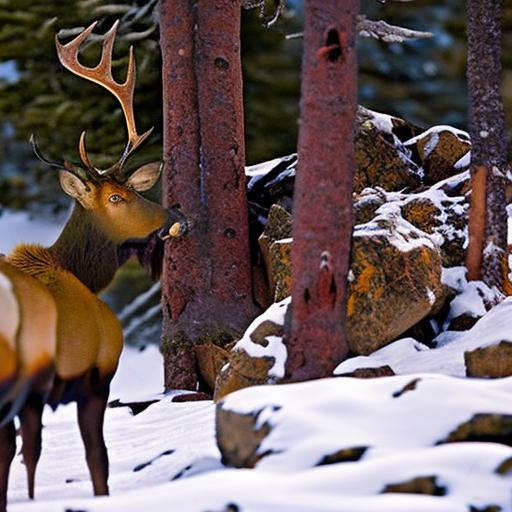
Embark on an Unforgettable DIY Private Land Elk Hunt in Colorado: Tips and Tricks

Embarking on a DIY private land elk hunt in Colorado is an exhilarating and challenging adventure that promises unforgettable experiences and memories. Colorado is renowned for its abundant elk population, making it a prime destination for hunters seeking the thrill of pursuing these majestic creatures. However, a DIY hunt requires careful planning, physical and mental preparation, and a deep understanding of elk behavior and hunting strategies. In this article, we will explore the various aspects of planning and executing a successful DIY private land elk hunt in Colorado.
Key Takeaways
- DIY private land elk hunting in Colorado requires thorough planning and preparation
- Researching the best hunting areas in Colorado is crucial for a successful hunt
- Essential equipment for a successful elk hunt includes proper clothing, gear, and weapons
- Physical training and mental preparation are important for a successful hunt
- Hunting strategies such as tracking and stalking are key to a successful elk hunt
Planning Your DIY Elk Hunt: Researching the Best Hunting Areas in Colorado
Researching the best hunting areas in Colorado is crucial for a successful DIY elk hunt. There are numerous resources available to hunters, such as state wildlife agencies, hunting forums, and online mapping tools. These resources provide valuable information on elk populations, migration patterns, and hunting success rates in different areas.
When considering hunting areas, hunters must decide between private land and public land hunting. Private land hunting offers exclusive access to prime elk habitat but often requires obtaining permission from landowners or leasing hunting rights. Public land hunting, on the other hand, provides access to vast expanses of wilderness but may be more crowded and require additional scouting and navigation skills.
Obtaining the necessary licenses and permits is another important aspect of planning a DIY elk hunt in Colorado. Hunters must apply for elk tags through the state’s lottery system, which typically opens several months before the hunting season. It is essential to familiarize yourself with the application process and deadlines to ensure you have the necessary permits when planning your hunt.
Gear Up: Essential Equipment for a Successful Elk Hunt
Having the right gear is crucial for a successful elk hunt in Colorado. The rugged terrain and unpredictable weather conditions require hunters to be well-prepared with appropriate clothing, footwear, and hunting gear.
When it comes to clothing, layering is key. Colorado’s weather can change rapidly, so having multiple layers allows hunters to adjust their clothing as needed. It is essential to invest in high-quality, moisture-wicking base layers, insulating mid-layers, and waterproof outer layers. Additionally, a good pair of hunting boots with excellent traction and ankle support is essential for navigating the challenging terrain.
Hunting gear and equipment should also be carefully selected. A reliable rifle or bow, depending on your preference, is crucial for a successful hunt. Optics such as binoculars and spotting scopes are essential for spotting elk from a distance. Other necessary gear includes a backpack, game bags for meat transportation, a GPS device or compass for navigation, and a reliable hunting knife.
Creating a packing list is essential to ensure you have all the necessary equipment for your hunt. This list should include items such as food and water, first aid supplies, survival gear, camping equipment if you plan to stay overnight, and any personal items you may need.
Preparing for the Hunt: Physical Training and Mental Preparation
| Metrics | Description |
|---|---|
| Body Mass Index (BMI) | A measure of body fat based on height and weight |
| Cardiovascular Endurance | The ability of the heart, lungs, and circulatory system to deliver oxygen to working muscles during physical activity |
| Strength Training | Activities that build muscle strength and endurance, such as weightlifting or resistance training |
| Flexibility | The range of motion in joints and muscles |
| Agility | The ability to change direction quickly and efficiently |
| Reaction Time | The time it takes to respond to a stimulus |
| Mental Toughness | The ability to stay focused, motivated, and resilient in the face of challenges |
| Goal Setting | The process of identifying specific, measurable, achievable, relevant, and time-bound objectives |
Preparing physically and mentally for a DIY elk hunt in Colorado is crucial for success and enjoyment. Elk hunting requires traversing steep and rugged terrain at high altitudes, which can be physically demanding. Engaging in regular physical training leading up to your hunt will help improve your endurance, strength, and overall fitness level.
Physical training for hunting should focus on cardiovascular exercises such as hiking, running, or cycling to improve stamina. Strength training exercises that target the legs, core, and upper body will help build the necessary muscle strength for carrying gear and traversing challenging terrain. Additionally, practicing shooting techniques at the range will improve accuracy and confidence with your chosen weapon.
Mental preparation is equally important as physical training. Hunting can be mentally challenging due to long hours of waiting and the unpredictability of wildlife behavior. Developing patience and mental resilience is crucial for a successful hunt. Visualization exercises, meditation, and spending time in nature can help calm the mind and prepare for the challenges ahead.
Being in good physical and mental shape will not only enhance your hunting experience but also ensure your safety in the field. It is essential to listen to your body, take breaks when needed, and stay hydrated and well-rested throughout your hunt.
Hunting Strategies: Tips and Tricks for Tracking and Stalking Elk
Understanding elk behavior is key to developing effective hunting strategies. Elk are social animals that live in herds, with dominant bulls leading the group. They have well-defined migration patterns and tend to move between different elevations depending on the season.
When tracking elk, it is important to look for signs such as tracks, droppings, rubs on trees, and wallows. These signs can indicate recent elk activity and help you determine their direction of travel. Paying attention to wind direction is crucial, as elk have a keen sense of smell and can easily detect human scent.
Stalking elk requires patience, stealth, and knowledge of their behavior. Moving slowly and quietly through the terrain, using natural cover to conceal yourself, and avoiding sudden movements are essential when approaching elk. It is important to stay downwind of the elk to prevent them from detecting your scent.
Persistence is key when hunting elk. They are elusive animals that can quickly disappear into dense vegetation or rugged terrain. It may take several days of scouting and tracking before you have an opportunity for a shot. It is important to remain patient and persistent, as success often comes to those who put in the time and effort.
Shooting Techniques: Mastering the Art of Bowhunting or Rifle Hunting
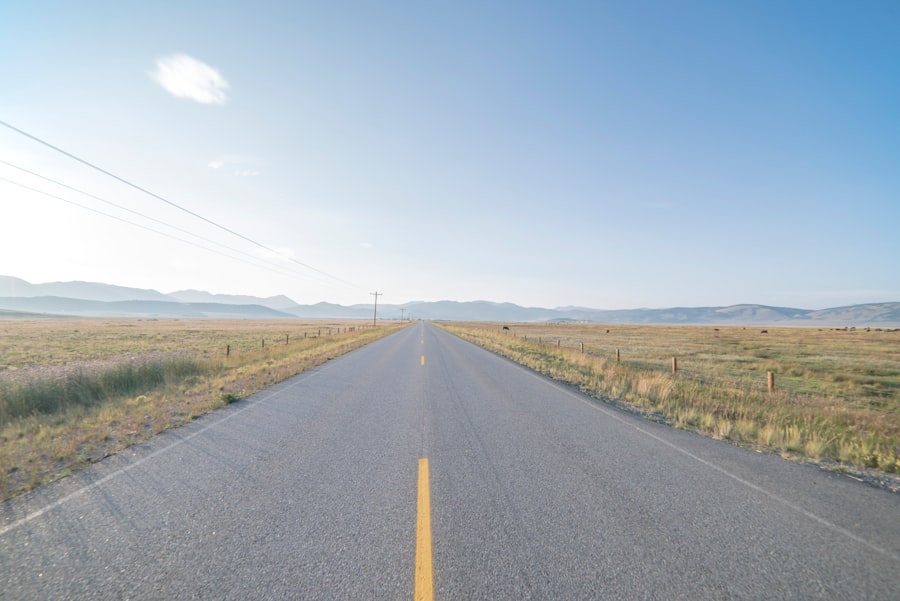
Choosing the right weapon for your hunt is a personal decision that depends on your skill level, preference, and hunting regulations. Bowhunting offers a more challenging and intimate hunting experience, requiring hunters to get closer to their prey. Rifle hunting, on the other hand, provides greater accuracy and range.
Regardless of the weapon you choose, mastering shooting techniques is crucial for a successful hunt. Practice regularly at the range to improve accuracy and become familiar with your weapon’s capabilities. It is important to know your effective shooting range and only take shots within that range to ensure a clean and ethical kill.
Safety should always be a top priority when handling firearms or archery equipment. Familiarize yourself with the proper handling and storage of your weapon, and always follow basic firearm safety rules. Additionally, it is important to be aware of your surroundings and ensure there are no other hunters or hikers in your line of fire.
Field Dressing and Processing Your Elk: Steps to Follow After a Successful Hunt
After a successful hunt, proper field dressing and processing of your elk is essential to ensure the quality and safety of the meat. Field dressing involves removing the internal organs and cooling the carcass as quickly as possible to prevent spoilage.
To field dress an elk, start by making an incision from the sternum to the anus, being careful not to puncture any organs. Carefully remove the internal organs, taking care not to contaminate the meat. Once the carcass is gutted, prop open the chest cavity to allow air circulation and cool the meat.
Processing and preserving your meat can be done at home or by a professional butcher. If processing at home, it is important to have a clean workspace and proper tools for cutting and packaging the meat. It is recommended to vacuum-seal or wrap the meat tightly in butcher paper to prevent freezer burn.
Tips for successful meat processing include properly aging the meat for tenderness, removing any excess fat or connective tissue, and labeling each package with the cut of meat and date. Freezing the meat at or below 0°F (-18°C) will ensure its long-term preservation.
Safety and Ethics: Responsible Hunting Practices to Follow
Safety should always be a top priority when hunting. It is important to familiarize yourself with the hunting regulations and safety guidelines specific to the area you will be hunting in. Basic safety practices include treating every firearm as if it is loaded, keeping your finger off the trigger until ready to shoot, and being aware of your target and what is beyond it.
Ethical hunting practices involve respecting wildlife and the environment. It is important to only take shots within your effective shooting range to ensure a clean and ethical kill. Additionally, hunters should strive to minimize their impact on the environment by practicing Leave No Trace principles, such as packing out all trash and minimizing disturbance to wildlife habitats.
Respecting the animal you harvest is also an important aspect of ethical hunting. Taking only what you need, utilizing as much of the animal as possible, and properly disposing of any waste are all ways to show respect for the animal’s life.
Accommodation and Logistics: Where to Stay and How to Navigate Your Hunting Grounds
Choosing the right accommodation is crucial for a comfortable and successful hunt. Depending on your preferences and budget, options range from camping in designated areas to renting a cabin or staying in a hotel near your hunting grounds. It is important to consider factors such as proximity to your hunting area, access to amenities, and availability of storage for gear and meat.
Navigating your hunting grounds requires careful planning and preparation. Familiarize yourself with the area through maps, GPS devices, or online mapping tools. Marking key landmarks or waypoints can help you navigate through unfamiliar terrain. It is also important to have a backup plan in case of unexpected weather conditions or changes in elk behavior.
Tips for a successful and comfortable hunt include packing extra food and water, carrying a first aid kit, informing someone of your hunting plans and expected return time, and always carrying a means of communication such as a cell phone or satellite device.
Reflections on Your DIY Elk Hunt and Future Hunting Opportunities in Colorado
Embarking on a DIY private land elk hunt in Colorado is a challenging and rewarding experience that offers the opportunity to connect with nature, test your skills, and create lasting memories. Reflecting on your hunt, regardless of the outcome, allows you to appreciate the beauty of the wilderness and the privilege of being able to pursue these magnificent animals.
Colorado offers a wealth of hunting opportunities beyond elk, including deer, antelope, and small game. Exploring these opportunities can provide hunters with new challenges and experiences. It is important to continue learning and honing your skills as a hunter, always striving to improve and deepen your connection with the natural world.
In conclusion, a DIY private land elk hunt in Colorado requires careful planning, physical and mental preparation, and a deep understanding of elk behavior and hunting strategies. By researching the best hunting areas, gearing up with essential equipment, preparing physically and mentally, mastering shooting techniques, practicing safety and ethics, and navigating your hunting grounds effectively, you can increase your chances of a successful and enjoyable hunt. Remember to always respect wildlife and the environment, and continue exploring the world of hunting with an open mind and a sense of adventure.
If you’re planning a DIY private land elk hunt in Colorado, you may also be interested in learning about hunting rabbits without a gun. Check out this informative article on Old Oak Syndicate’s website: How to Hunt Rabbits Without a Gun. It provides valuable tips and techniques for catching rabbits using alternative methods. Whether you’re looking to expand your hunting skills or simply prefer a different approach, this article is a great resource for any avid hunter.
FAQs
What is a DIY private land elk hunt in Colorado?
A DIY private land elk hunt in Colorado is a hunting trip where the hunter is responsible for all aspects of the hunt, including obtaining the necessary licenses and permits, scouting the land, setting up camp, and tracking and harvesting the elk.
What are the benefits of a DIY private land elk hunt in Colorado?
The benefits of a DIY private land elk hunt in Colorado include the ability to have complete control over the hunt, the potential for a more personalized and unique experience, and the opportunity to save money compared to guided hunts.
What are the requirements for obtaining a hunting license in Colorado?
To obtain a hunting license in Colorado, hunters must complete a hunter education course, provide proof of residency or obtain a non-resident license, and purchase the appropriate license and tags for the specific species they wish to hunt.
What is the best time of year for a DIY private land elk hunt in Colorado?
The best time of year for a DIY private land elk hunt in Colorado is typically during the fall months, specifically September through November, when elk are in their mating season and more active.
What equipment is necessary for a DIY private land elk hunt in Colorado?
Equipment necessary for a DIY private land elk hunt in Colorado includes a hunting rifle or bow, appropriate ammunition or arrows, camping gear, food and water, appropriate clothing and footwear, and a means of transportation to and from the hunting location.
What are the regulations for hunting on private land in Colorado?
Hunting on private land in Colorado requires permission from the landowner and adherence to all state hunting regulations, including obtaining the appropriate licenses and tags, following bag limits and hunting seasons, and using legal hunting methods.

Herb has been a longtime lover of the outdoors. Whether it be hunting, camping, fishing or just getting outside to reset. Proud father and animal lover. Bourbon anyone?

by
Tags:
Comments

Categories
- Big Game Hunting (301)
- Deer (202)
- Reviews (3)
- Shooting (16)
- Slingshot (1)
- Small Game Hunting (42)
- Upland Hunting (126)
- Waterfowl Hunting (3)


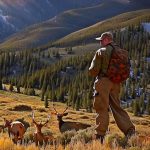
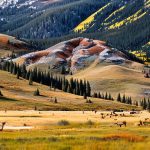
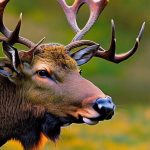
Leave a Reply